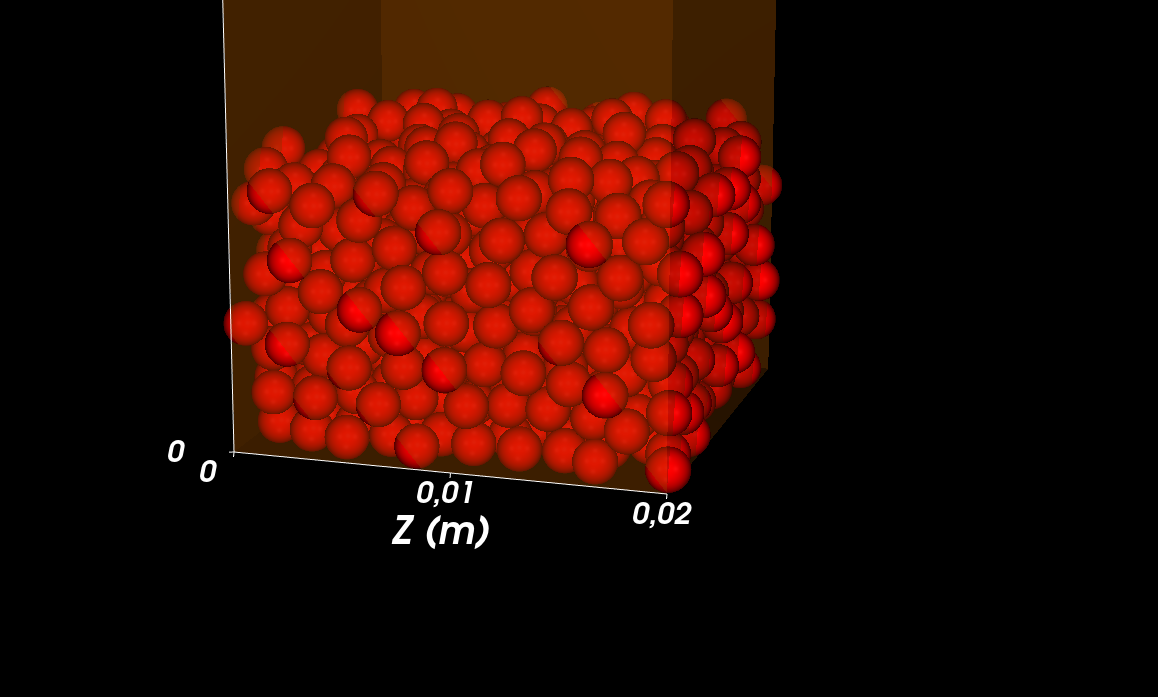-
-
April 18, 2023 at 7:04 am
Marko.motaln1
SubscriberHello,
I am currently running a particle packing simulation using Rocky DEM and trying to use the JKR adhesive model. However, I am facing some issues with particle deletion and I am unsure if it is related to the timestep or if anyone has experienced a similar issue with the JKR adhesive model. I already tried to use a smaller timestep as Rayleigh's timestep.
Thank you in advance for your help.
-
April 18, 2023 at 11:01 am
Rob
Forum ModeratorHow does the system behave if the adhesion model is off?
-
April 18, 2023 at 11:15 am
Marko.motaln1
SubscriberThank you for your response!
I have tested the system with the adhesion model turned off and the system behaves normally. The number of particles in the system remains constant. However, as soon as the JKR adhesion model is turned on with a surface energy setting of 0.01 J/m2, some particles are deleted at the same impact and timestep, and other settings. I have attempted to reproduce the same model that I was using in Rocky DEM in EDEM, and I have found that the model works fine with a timestep of 1e-6. However in ROCKY i decreased the timestep to 1e-8, although there are fewer missing particles, some are still disappearing.
Is there any known solution or workaround for this issue with the JKR adhesion model causing particle deletion? Any suggestions would be greatly appreciated.
Thank you.
-
April 18, 2023 at 12:57 pm
Rob
Forum ModeratorI'm not aware of any problems, but have raised it with the internal team. There may be a delay due to timezones. Have you used any of the other adhesion models? We're not permitted to download any files so the more information you can provide the better.
-
April 18, 2023 at 1:37 pm
Rob
Forum ModeratorAnd they've woken up. Are you using 2022R2?
-
April 18, 2023 at 1:47 pm
Marko.motaln1
SubscriberYes i use 2022R2.
I am currently dealing with a very simple particle packing problem that involves spherical particles with a size of 1000 microns. To generate the particles, I am using a simple volume fill technique, which ensures that the particles do not have any initial velocity. The bottom of the domain is modeled as a rigid surface, while the sides are periodic.
The coefficient of friction that I have used for this simulation is 0.4, and the density of the particles is 1500 kg/m3.
I acknowledge that I might have missed something since I am relatively new to Rocky DEM, and I also recently changed DEM software. As a result, there may be some small mistakes or oversights as I get accustomed to the new system.Thank you in advance for any suggestions that the community may provide.
-
April 18, 2023 at 2:16 pm
Rob
Forum ModeratorOK, 2023R1 fixes the problem. Otherwise try one of the other tangential force models; there's an interaction issue.
-
April 18, 2023 at 3:23 pm
Marko.motaln1
Subscriber- Many thanks for the prompt reply.
-
-
- The topic ‘Rocky – JKR’ is closed to new replies.


- air flow in and out of computer case
- Varying Bond model parameters to mimic soil particle cohesion/stiction
- Eroded Mass due to Erosion of Soil Particles by Fluids
- Centrifugal Fan Analysis for Determination of Characteristic Curve
- Guidance needed for Conjugate Heat Transfer Analysis for a 3s3p Li-ion Battery
- I am doing a corona simulation. But particles are not spreading.
- Issue to compile a UDF in ANSYS Fluent
- JACOBI Convergence Issue in ANSYS AQWA

-
3852
-
1414
-
1220
-
1117
-
1015

© 2025 Copyright ANSYS, Inc. All rights reserved.








